Abstract
The lethal and inhibitory effects of actinomycin D (Act D) on asynchronous and synchronized populations of mouse L-cells have been studied. It has been shown that the survival curve of populations in the logarithmic phase of growth can be approximated by two exponential survival curves corresponding to a sensitive and resistant moiety. The size and sensitivity of both moieties vary during the growth of the population. As the cell population moves through logarithmic and into stationary phase, the sensitive moiety becomes smaller but more resistant whereas the resistant moiety increases in size and also becomes more resistant. This variation appears to be related to a reduced uptake of Act D and also a reduced rate of DNA and RNA synthesis. Variations in sensitivity to the drug have also been observed during the division cycle of synchronized cells with cells in the S phase showing the greatest uptake of the drug and also the greatest sensitivity. However, no direct correlation between uptake and sensitivity has been established. Actinomycin D has inhibitory effects on both RNA and DNA synthesis. RNA synthesis is inhibited rapidly but does not seem to drop to less than 5% of the control value. The inhibition of DNA synthesis appears to occur over a longer period and may reach values as low as 0.25% of control. In both cases the degree of inhibitions appears to be dependent on both the length of exposure and the concentration of the drug. Certain similarities between the response of cells to Act D and X-rays have been observed and are discussed.
Full text
PDF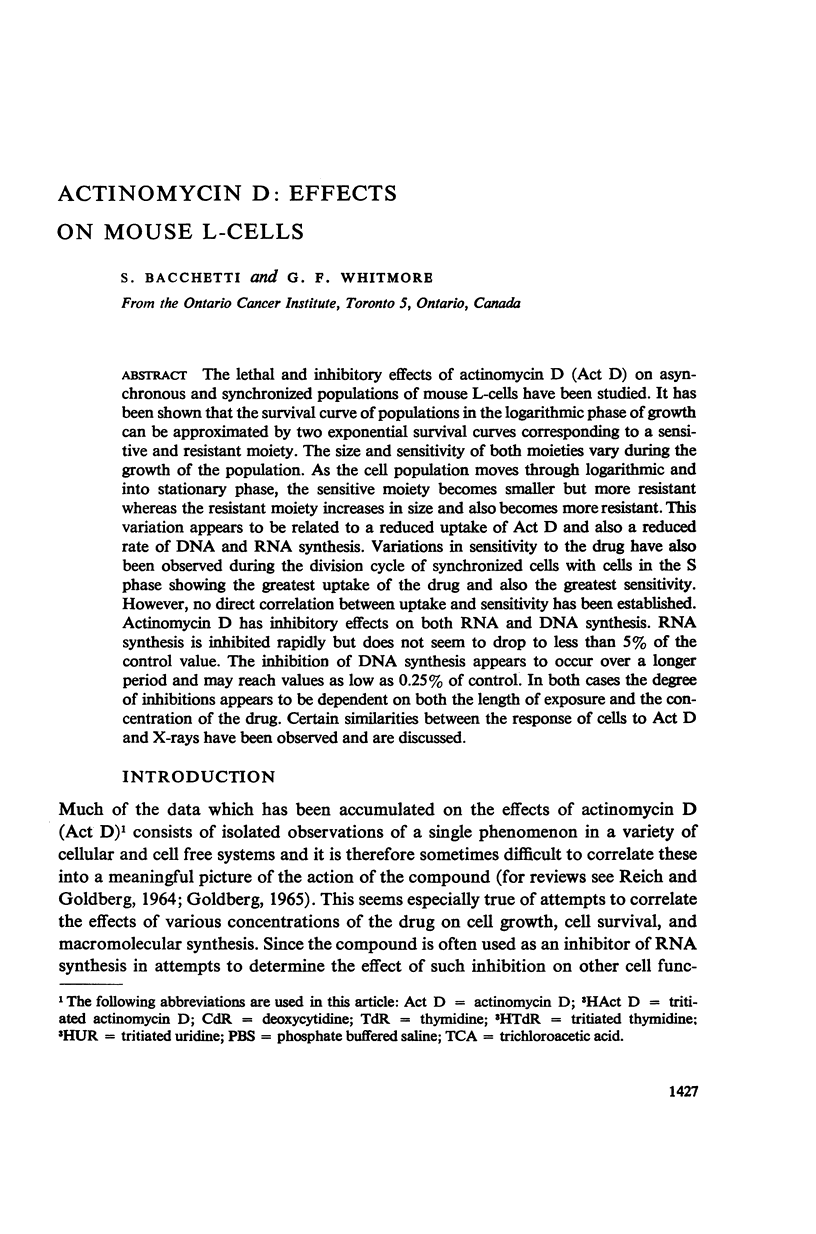
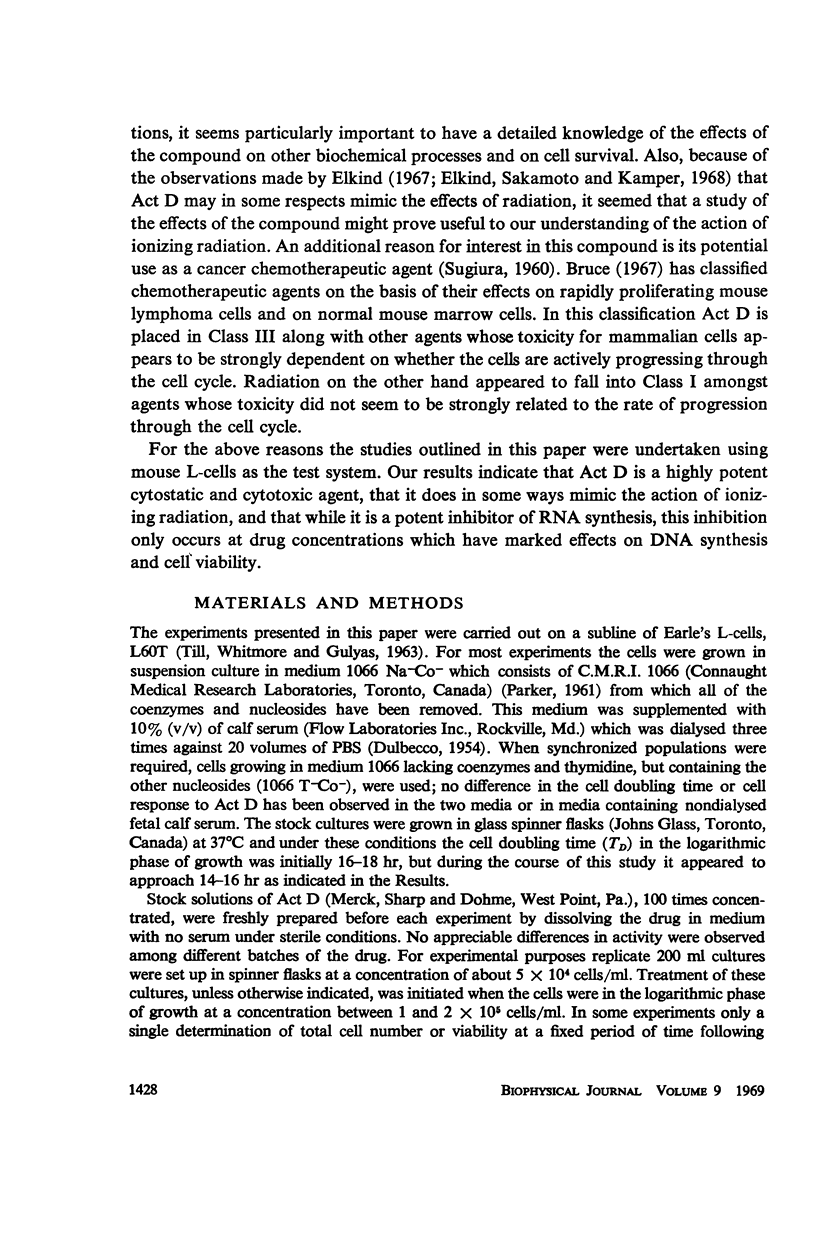
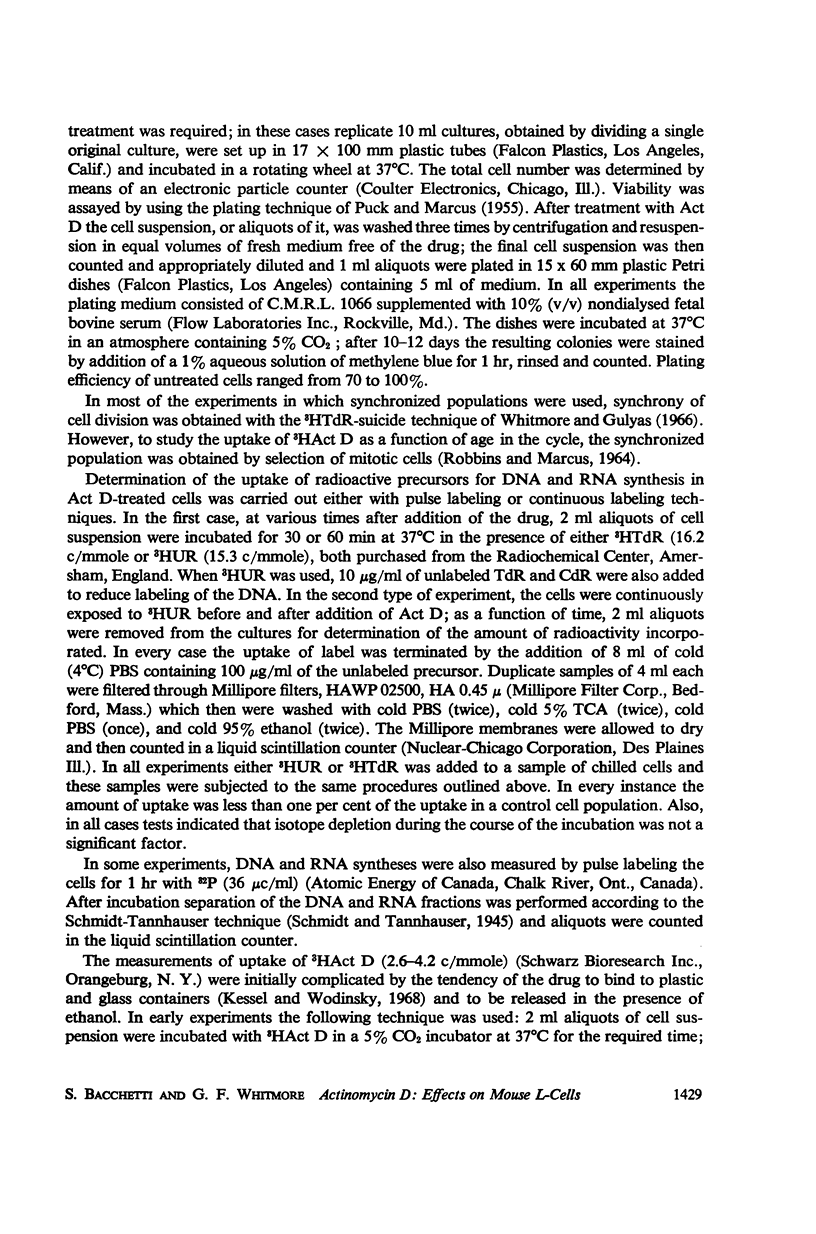
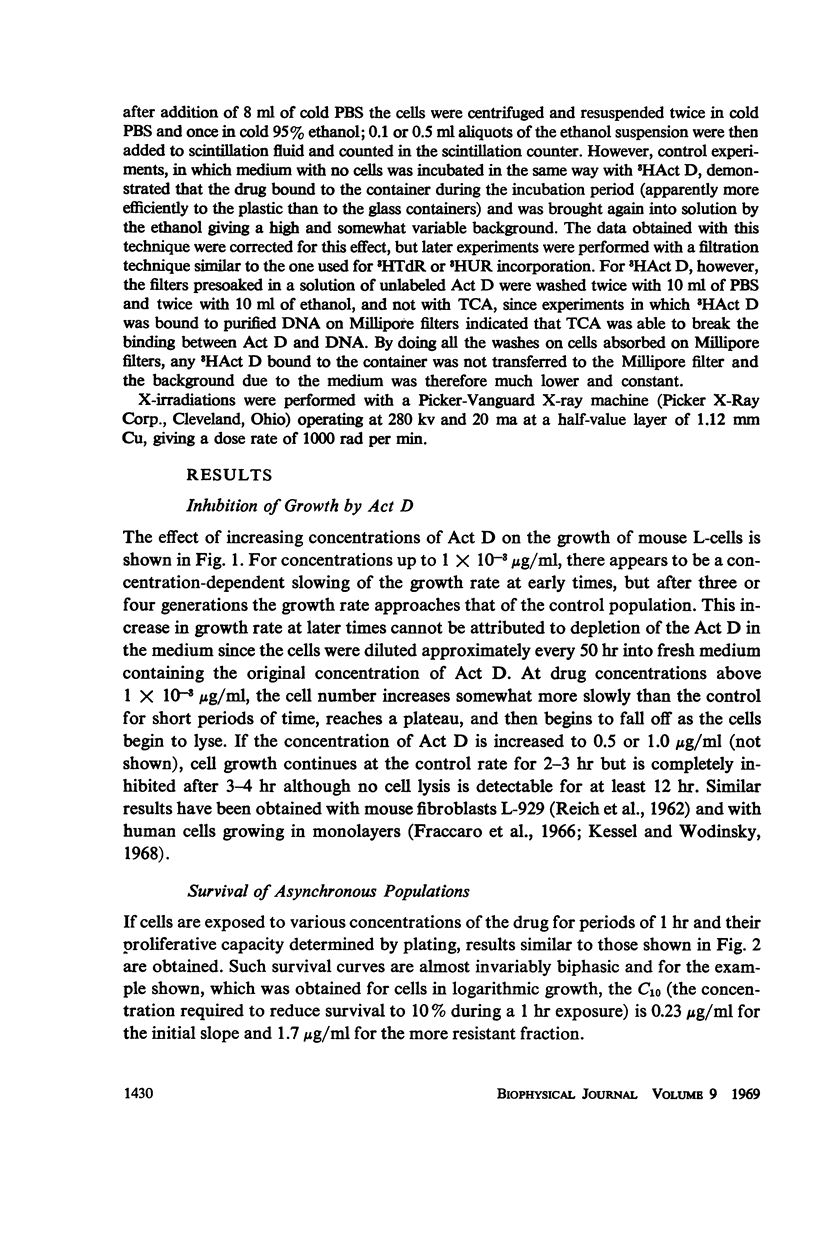
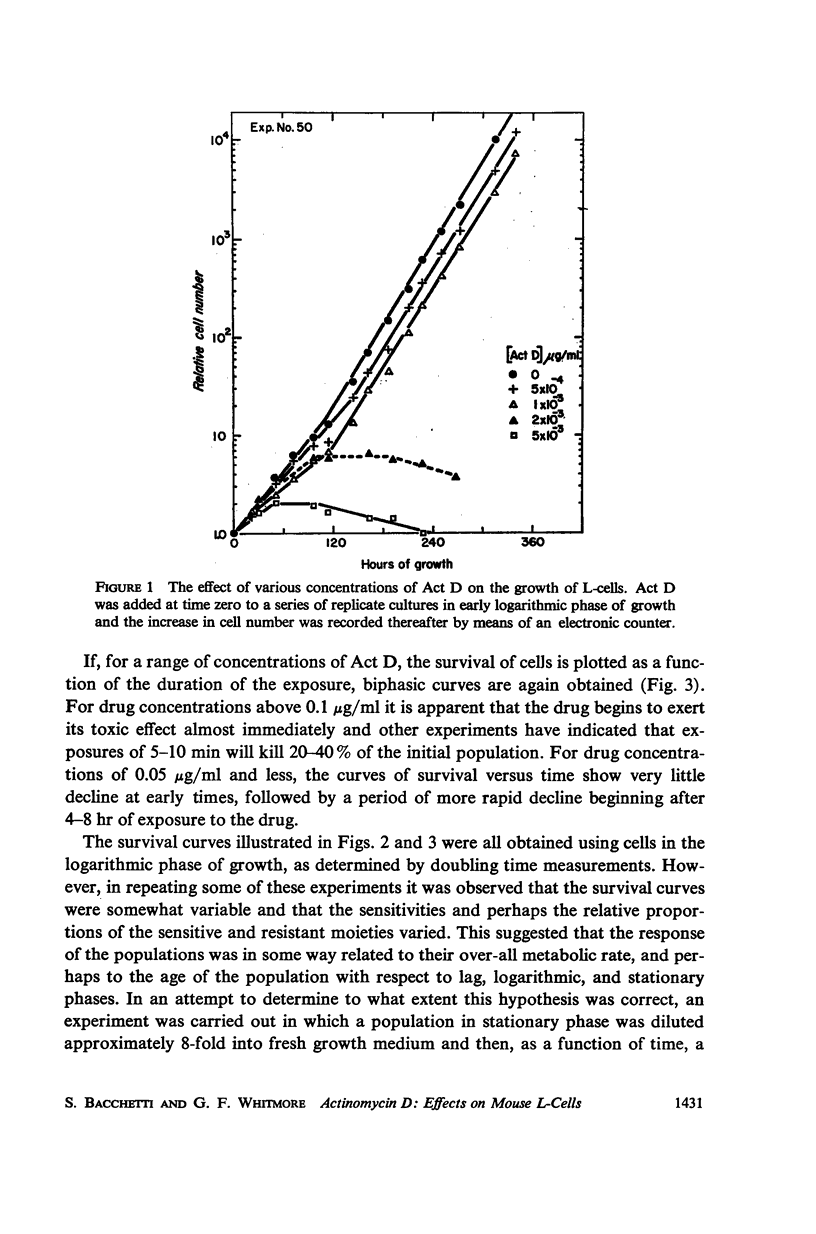
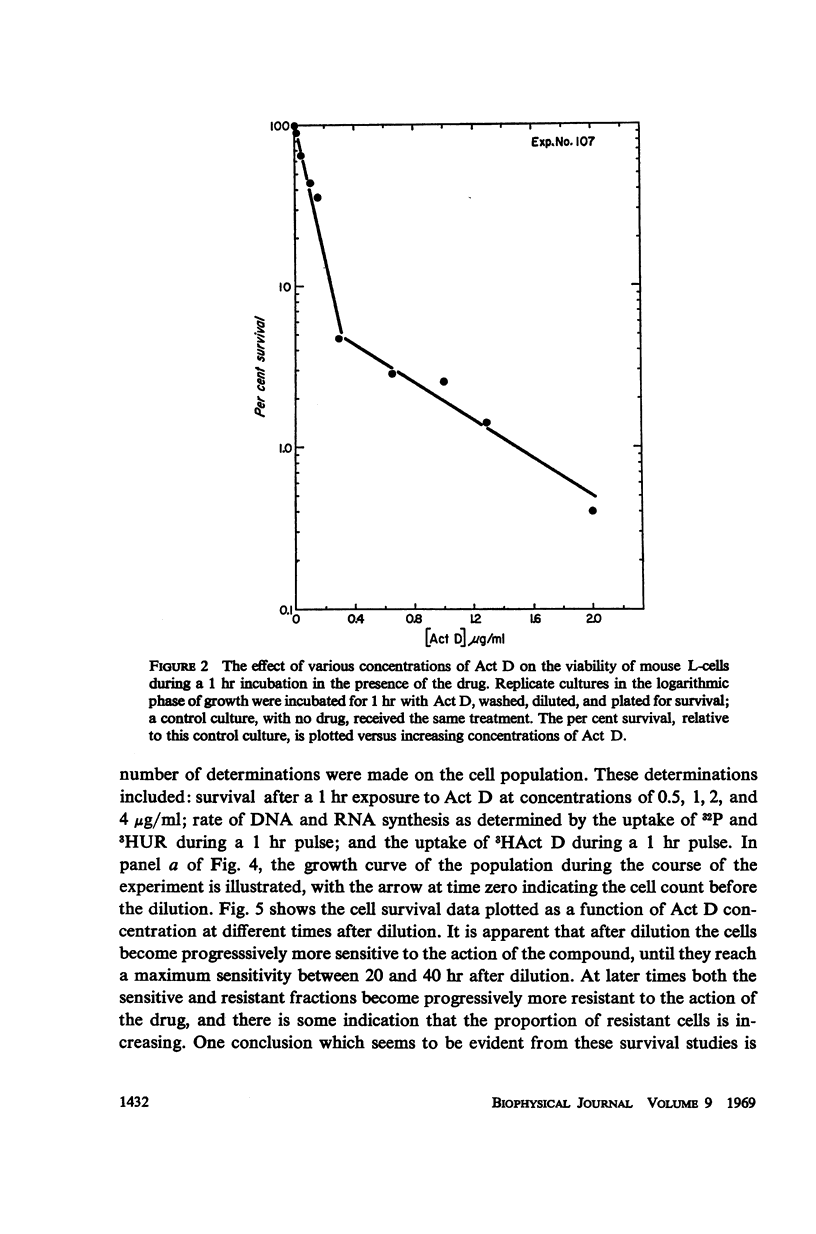
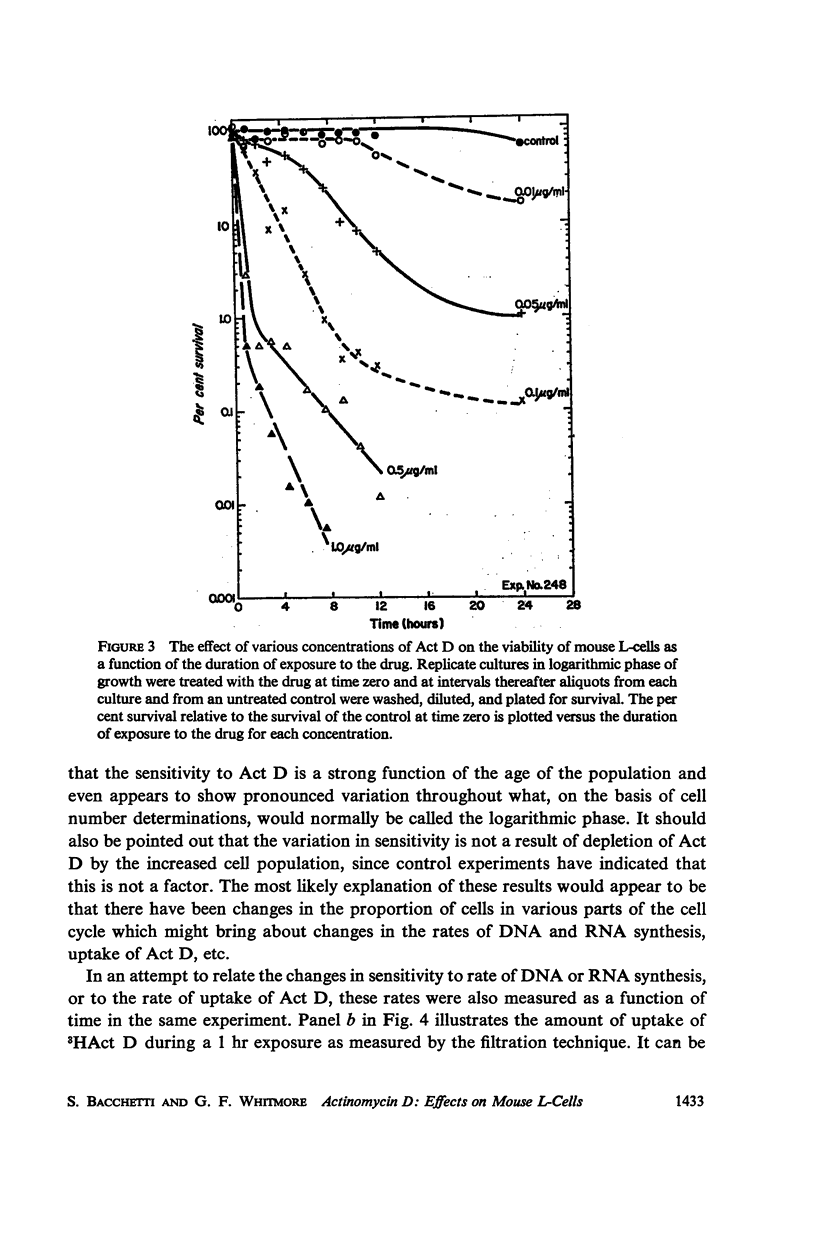
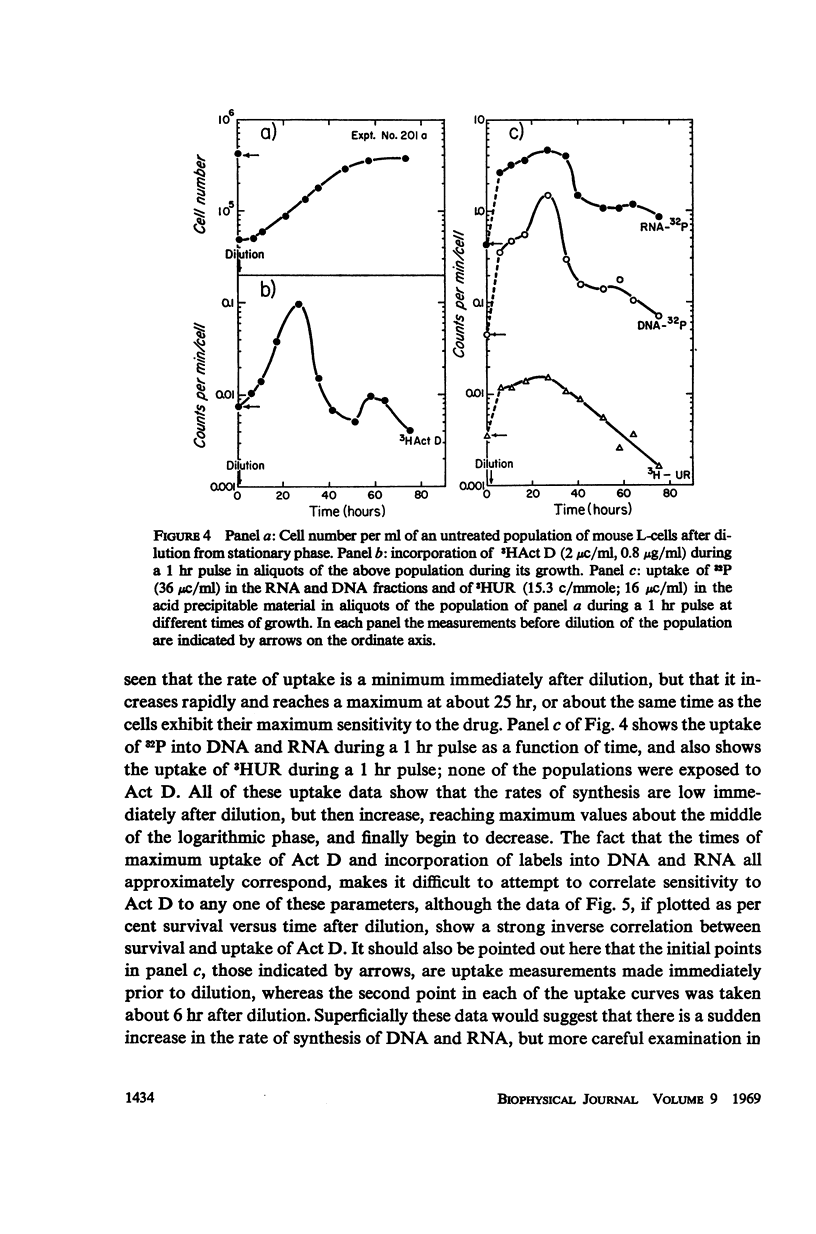
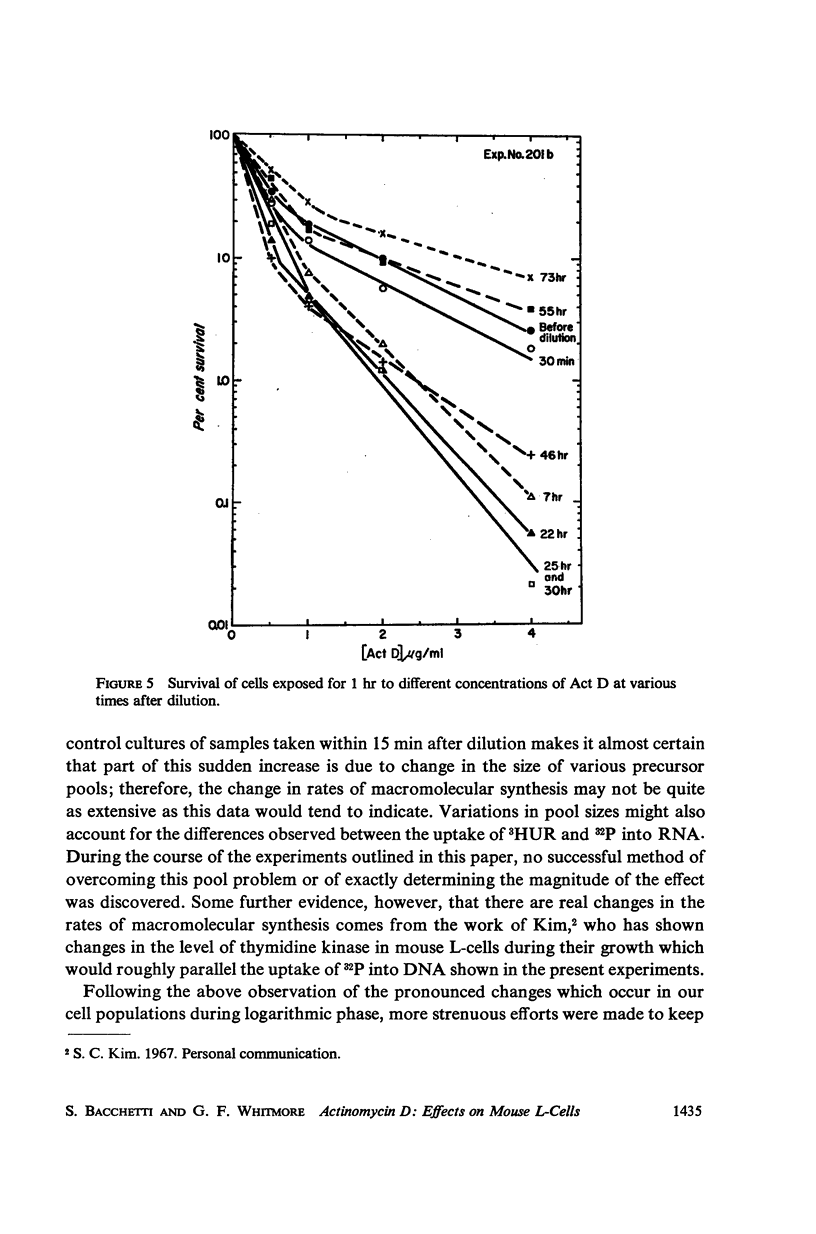
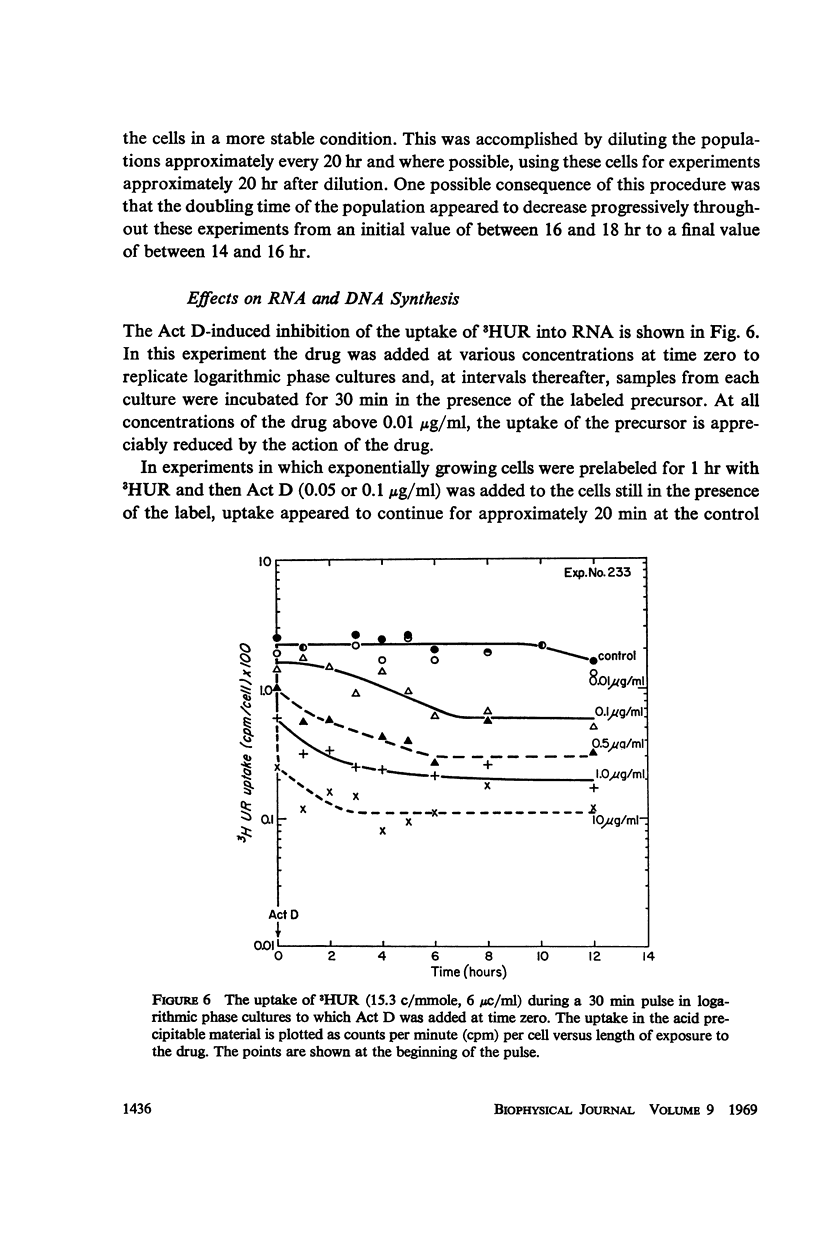
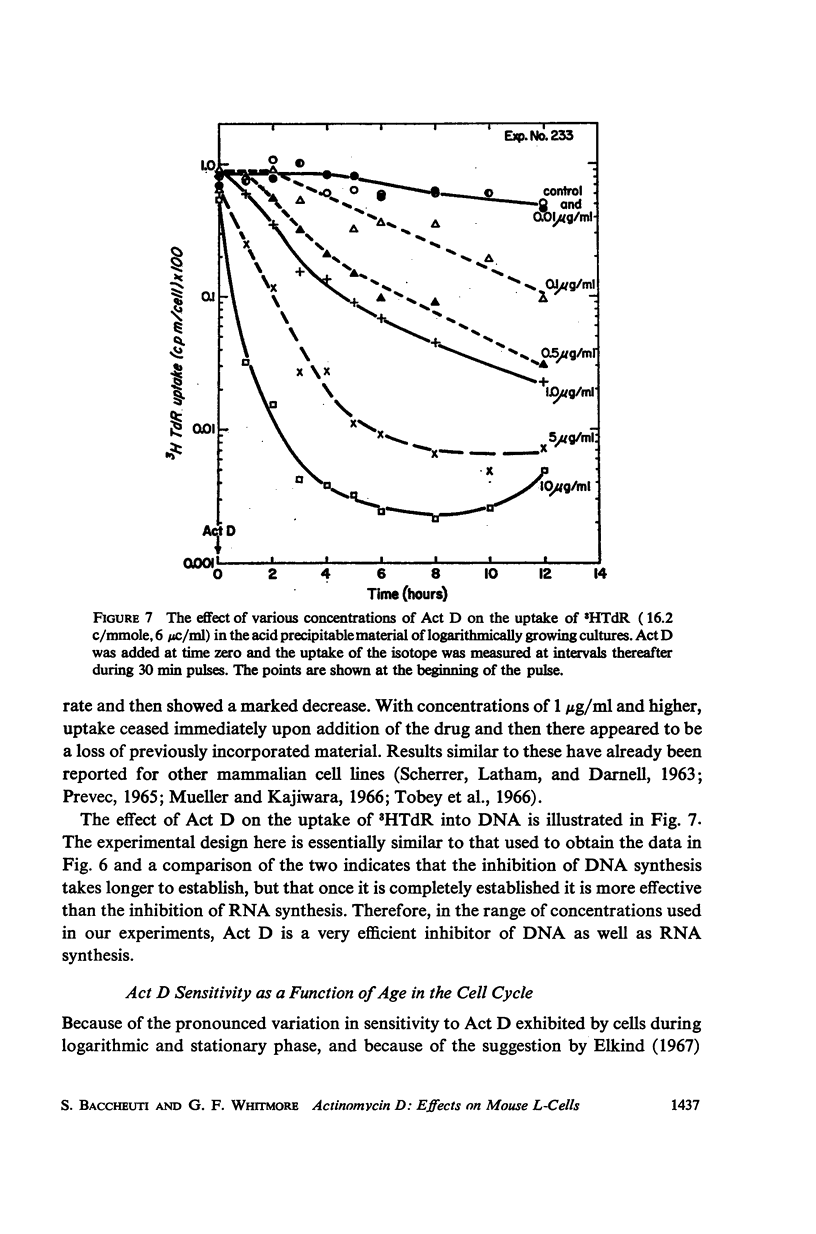
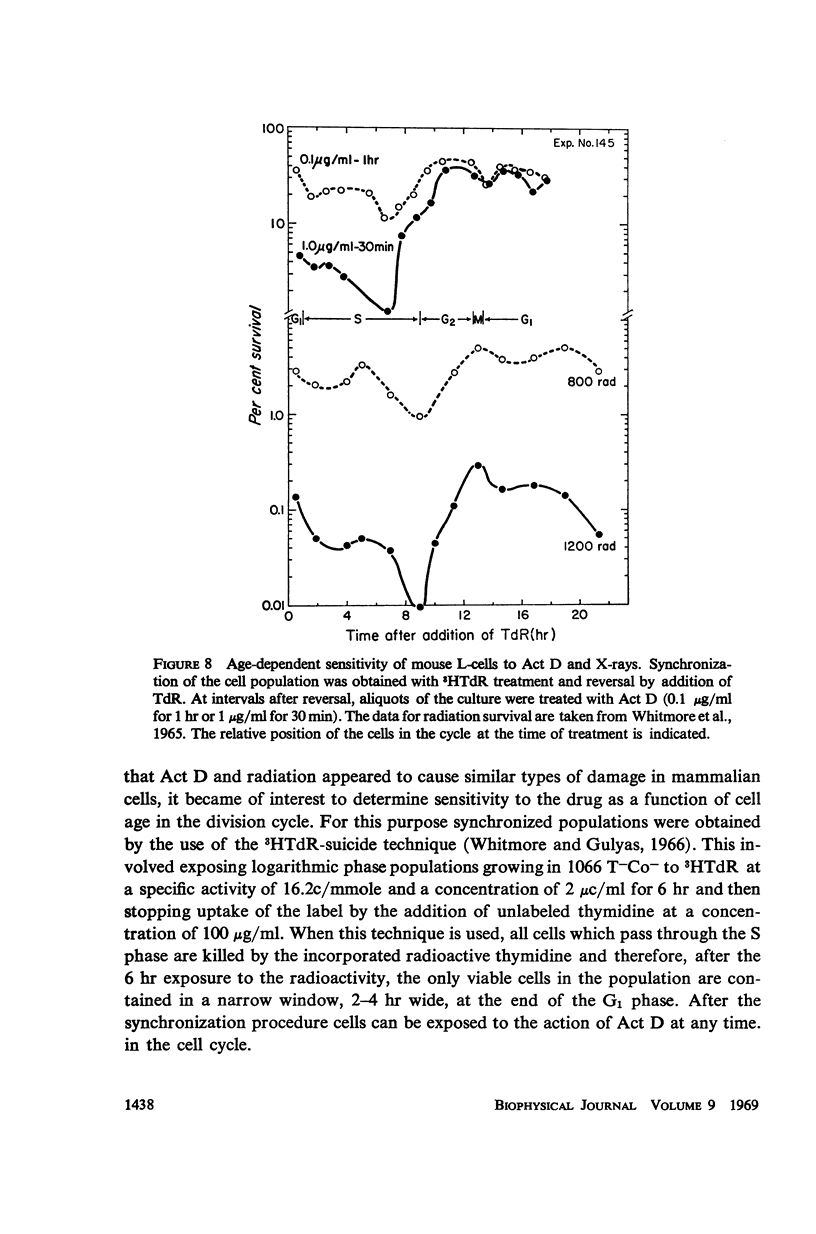
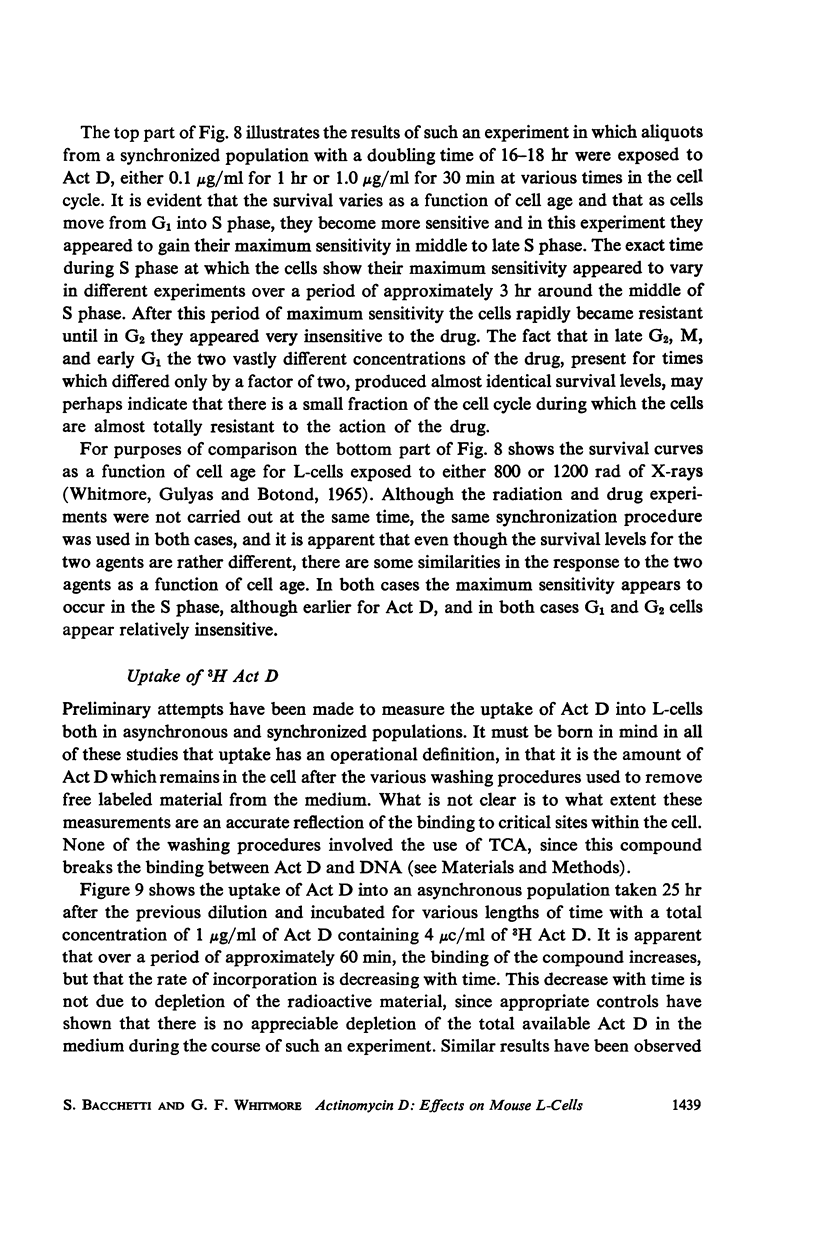
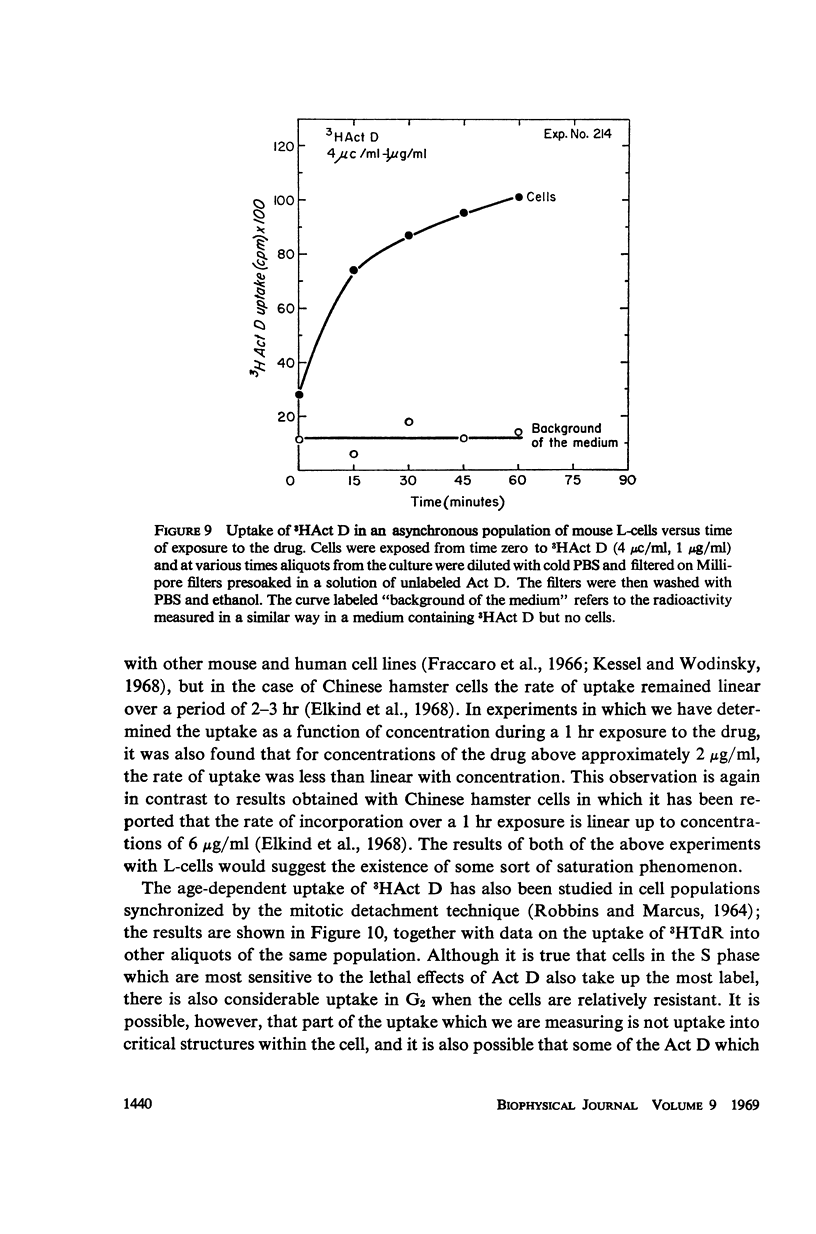
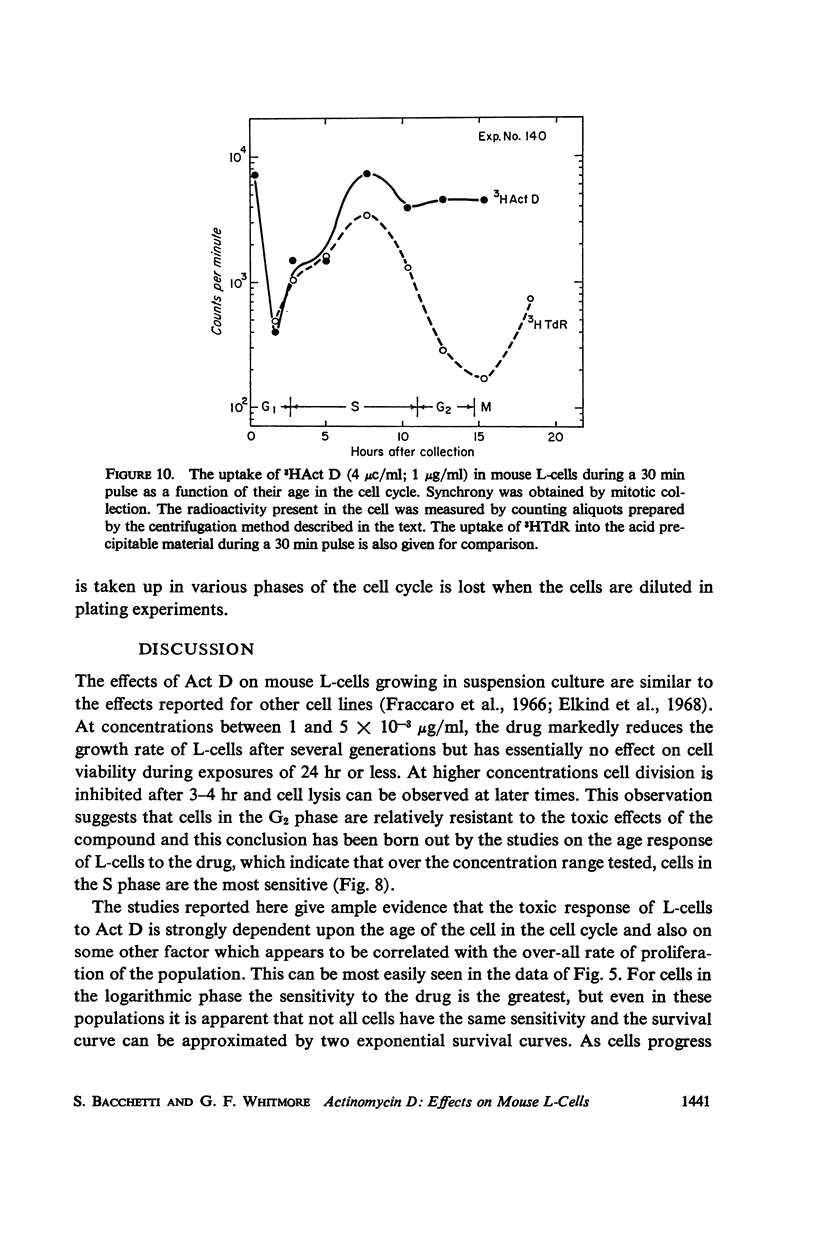
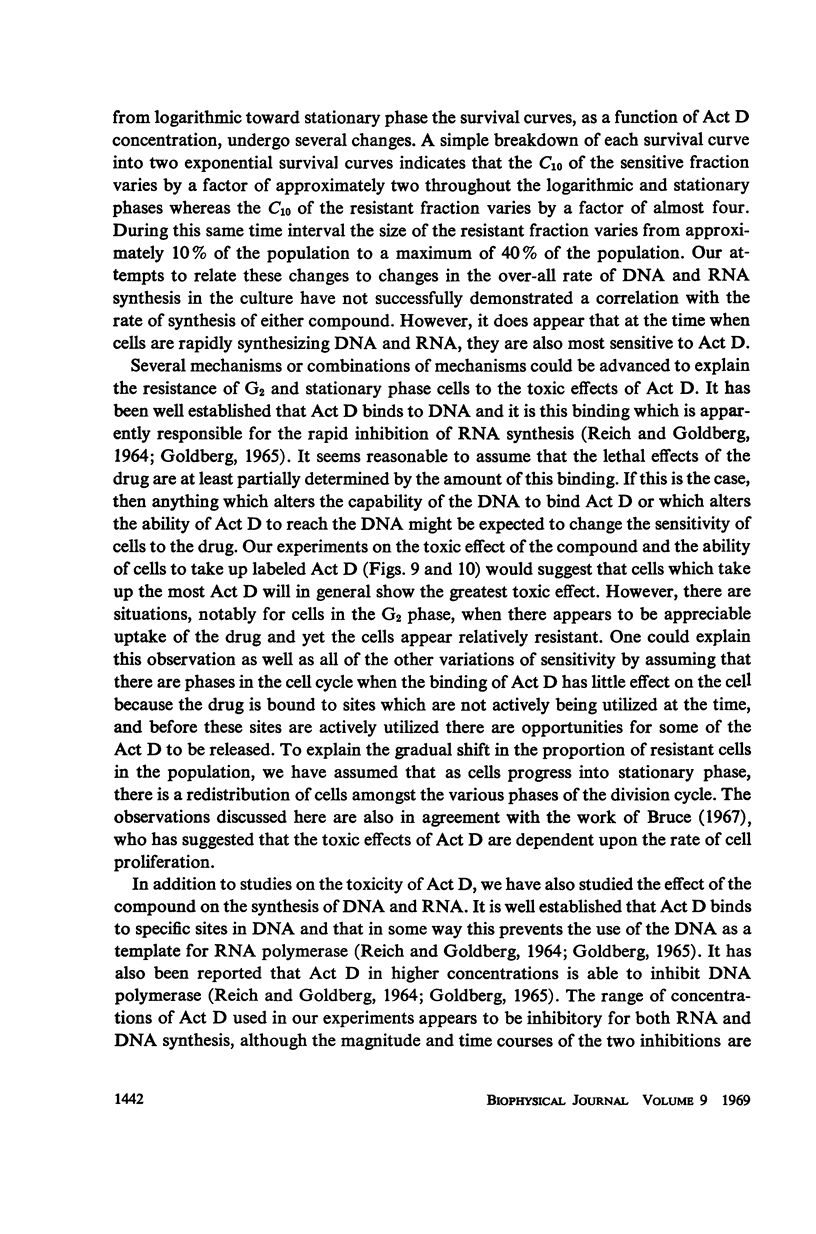
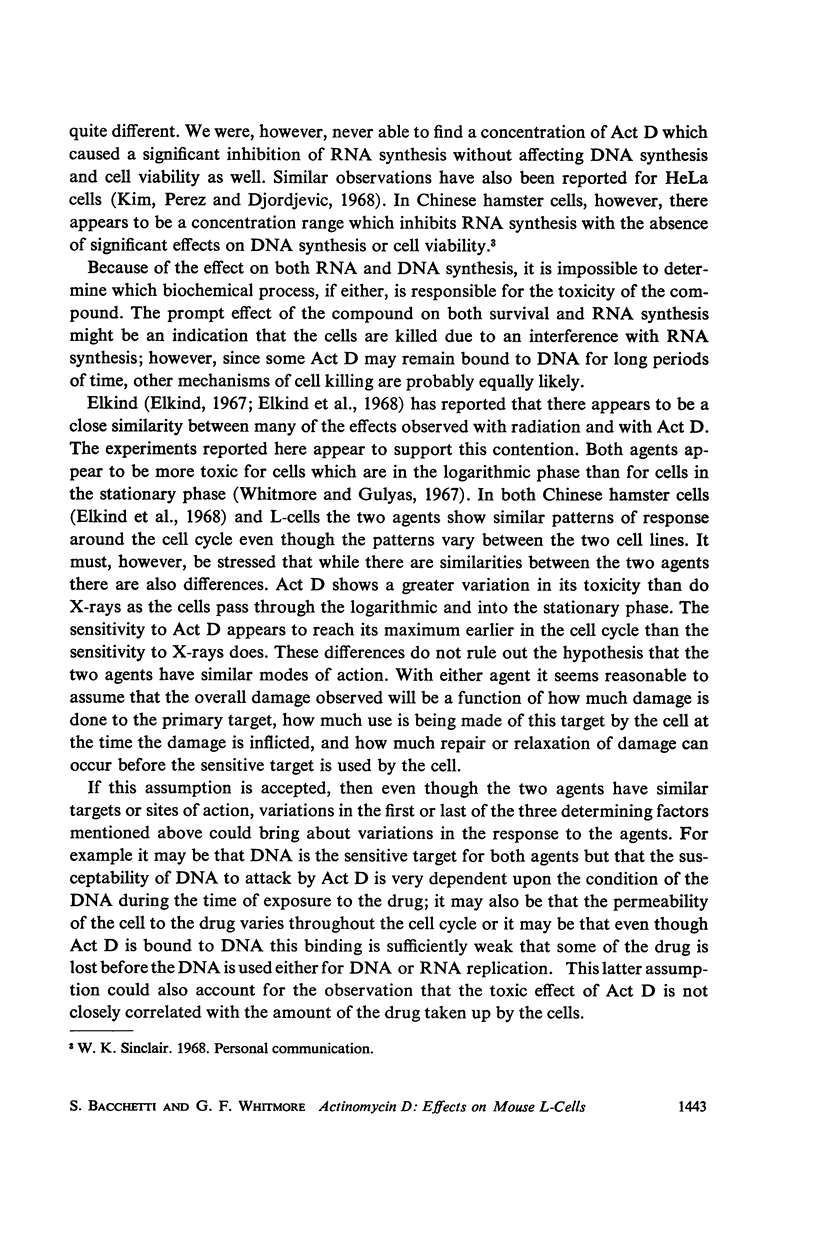
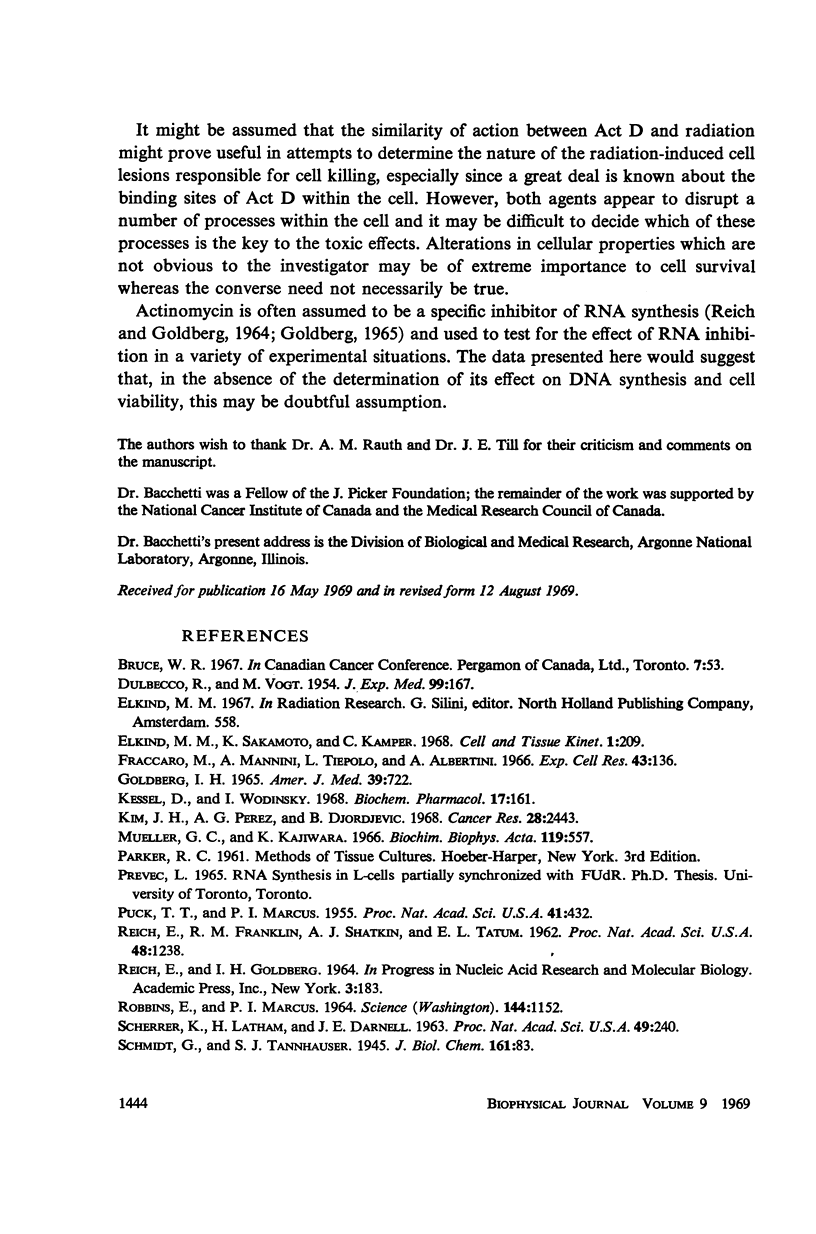

Selected References
These references are in PubMed. This may not be the complete list of references from this article.
- DULBECCO R., VOGT M. Plaque formation and isolation of pure lines with poliomyelitis viruses. J Exp Med. 1954 Feb;99(2):167–182. doi: 10.1084/jem.99.2.167. [DOI] [PMC free article] [PubMed] [Google Scholar]
- Fraccaro M., Mannini A., Tiepolo L., Albertini A. Incorporation of tritium-labelled actinomycin in a human cell line. Exp Cell Res. 1966 Aug;43(1):136–147. doi: 10.1016/0014-4827(66)90387-9. [DOI] [PubMed] [Google Scholar]
- Kessel D., Wodinsky I. Uptake in vivo and in vitro of actinomycin D by mouse leukemias as factors in survival. Biochem Pharmacol. 1968 Jan;17(1):161–164. doi: 10.1016/0006-2952(68)90170-6. [DOI] [PubMed] [Google Scholar]
- Kim J. H., Perez A. G., Djordjevic B. Studies on unbalanced growth in synchronized HeLa cells. Cancer Res. 1968 Dec;28(12):2443–2447. [PubMed] [Google Scholar]
- Mueller G. C., Kajiwara K. Actinomycin D and p-fluorophenylalanine, inhibitors of nuclear replication in HeLa cells. Biochim Biophys Acta. 1966 Jun 22;119(3):557–565. doi: 10.1016/0005-2787(66)90132-8. [DOI] [PubMed] [Google Scholar]
- Puck T. T., Marcus P. I. A RAPID METHOD FOR VIABLE CELL TITRATION AND CLONE PRODUCTION WITH HELA CELLS IN TISSUE CULTURE: THE USE OF X-IRRADIATED CELLS TO SUPPLY CONDITIONING FACTORS. Proc Natl Acad Sci U S A. 1955 Jul 15;41(7):432–437. doi: 10.1073/pnas.41.7.432. [DOI] [PMC free article] [PubMed] [Google Scholar]
- REICH E., FRANKLIN R. M., SHATKIN A. J., TATUMEL Action of actinomycin D on animal cells and viruses. Proc Natl Acad Sci U S A. 1962 Jul 15;48:1238–1245. doi: 10.1073/pnas.48.7.1238. [DOI] [PMC free article] [PubMed] [Google Scholar]
- ROBBINS E., MARCUS P. I. MITOTICALLY SYNCHRONIZED MAMMALIAN CELLS: A SIMPLE METHOD FOR OBTAINING LARGE POPULATIONS. Science. 1964 May 29;144(3622):1152–1153. doi: 10.1126/science.144.3622.1152. [DOI] [PubMed] [Google Scholar]
- Reich E., Goldberg I. H. Actinomycin and nucleic acid function. Prog Nucleic Acid Res Mol Biol. 1964;3:183–234. doi: 10.1016/s0079-6603(08)60742-4. [DOI] [PubMed] [Google Scholar]
- SCHERRER K., LATHAM H., DARNELL J. E. Demonstration of an unstable RNA and of a precursor to ribosomal RNA in HeLa cells. Proc Natl Acad Sci U S A. 1963 Feb 15;49:240–248. doi: 10.1073/pnas.49.2.240. [DOI] [PMC free article] [PubMed] [Google Scholar]
- TILL J. E., WHITMORE G. F., GULYAS S. Deoxyribonucleic acid synthesis in individual L-strain mouse cells. II. Effects of thymidine starvation. Biochim Biophys Acta. 1963 Jun 25;72:277–289. [PubMed] [Google Scholar]
- Tobey R. A., Petersen D. F., Anderson E. C., Puck T. T. Life cycle analysis of mammalian cells. 3. The inhibition of division in Chinese hamster cells by puromycin and actinomycin. Biophys J. 1966 Sep;6(5):567–581. doi: 10.1016/s0006-3495(66)86678-x. [DOI] [PMC free article] [PubMed] [Google Scholar]
- Whitmore G. F., Gulyas S. Synchronization of mammalian cells with tritiated thymidine. Science. 1966 Feb 11;151(3711):691–694. doi: 10.1126/science.151.3711.691. [DOI] [PubMed] [Google Scholar]


